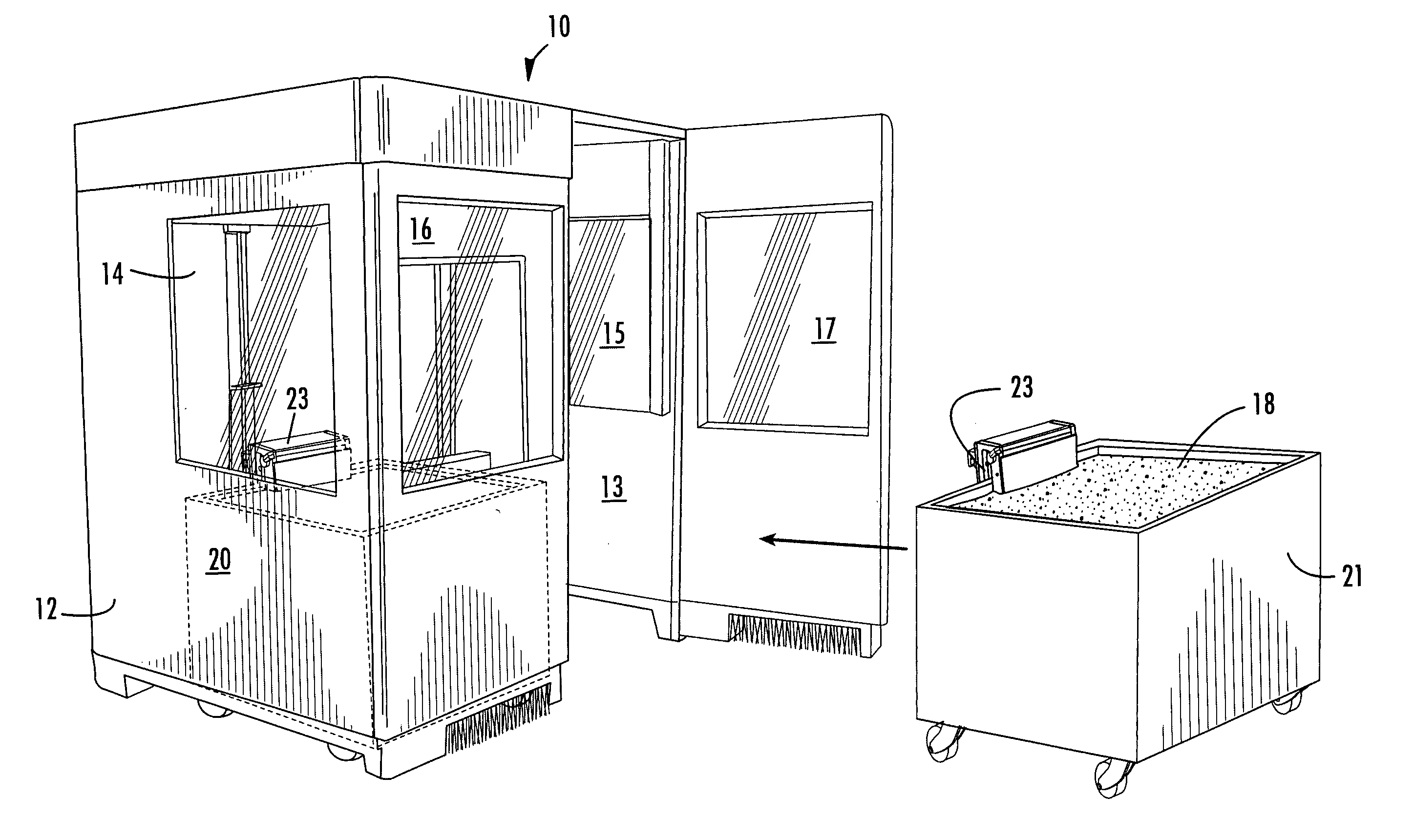Rapid prototyping and manufacturing system and method
a technology of rapid prototyping and manufacturing, applied in the direction of additive manufacturing process, application, electric/magnetic/electromagnetic heating, etc., can solve the problems of requiring tedious adjustments to the recoater system, unable to produce precise patterns quickly, and uneven mechanical systems. , to achieve the effect of simplifying the obtaining of precision
- Summary
- Abstract
- Description
- Claims
- Application Information
AI Technical Summary
Benefits of technology
Problems solved by technology
Method used
Image
Examples
Embodiment Construction
[0048] The invention will now be described more fully hereinafter with reference to the accompanying drawings, in which preferred embodiments of the invention are shown. These embodiments are provided so that this disclosure will be thorough and complete, and will fully convey the scope of the invention to those skilled in the art.
[0049] Turning now to FIG. 1, shown generally at 10 is a dual-chamber housing for housing two chambers 12, 13 for stereolithography. The housing has two chambers for increased efficiency of laser usage. While the object surface in one chamber is recoated, the laser can be applied to the recoated object surface in the other chamber so as to build objects in both chambers in a single run. The laser and the system for using the beam in multiple chambers is addressed in detail below.
[0050] The housing has view windows 14, 15 on opposite sidewalls, one in each chamber 12, 13, respectively. Each chamber has a door 16, 17 with a hingedly openable and removable ...
PUM
| Property | Measurement | Unit |
|---|---|---|
| stroke volume | aaaaa | aaaaa |
| energy | aaaaa | aaaaa |
| thickness | aaaaa | aaaaa |
Abstract
Description
Claims
Application Information
 Login to View More
Login to View More - R&D
- Intellectual Property
- Life Sciences
- Materials
- Tech Scout
- Unparalleled Data Quality
- Higher Quality Content
- 60% Fewer Hallucinations
Browse by: Latest US Patents, China's latest patents, Technical Efficacy Thesaurus, Application Domain, Technology Topic, Popular Technical Reports.
© 2025 PatSnap. All rights reserved.Legal|Privacy policy|Modern Slavery Act Transparency Statement|Sitemap|About US| Contact US: help@patsnap.com



